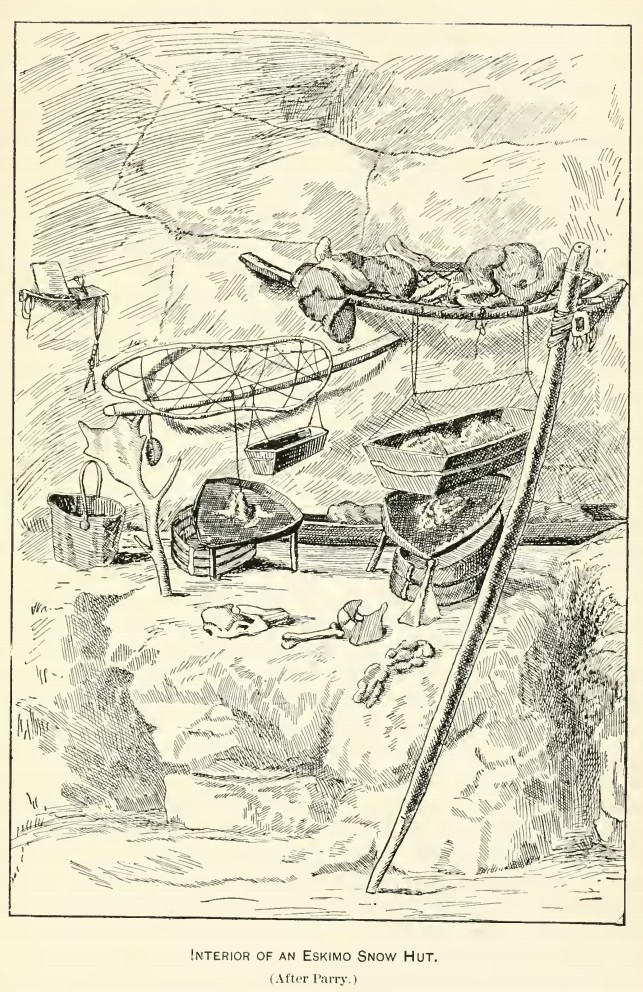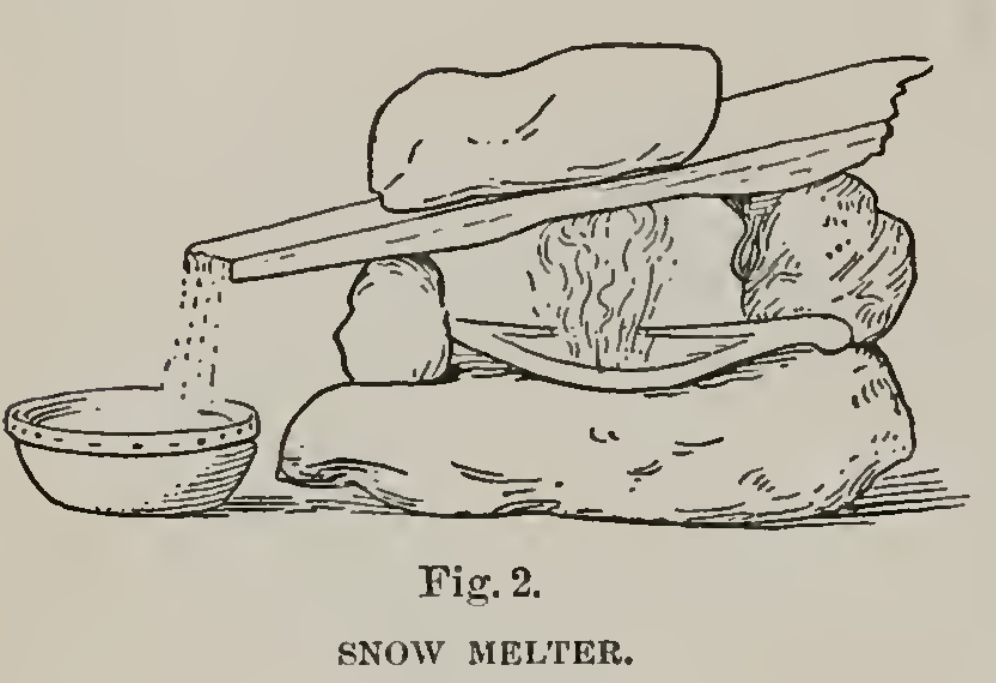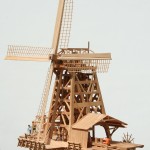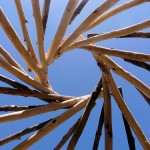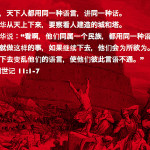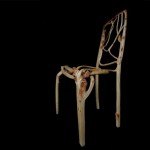Quoted from: Hough, Walter. The lamp of the Eskimo. US Government Printing Office, 1898.
Though the Eskimo live at a temperature of zero Fahrenheit, travelers have noticed their idiosyncrasy with regard to cold. The clothing is designedly left open at intervals around the waist and the bare skin exposed to the cold air. As a rule the Eskimo strip when in the house and sleep naked. Another indication of their feverishness is the consumption of great (quantities of ice-cold water. No explorer has failed to notice the Eskimo lamp, around which the whole domestic life of this people seems to focus. Far more remarkable than being the unique possessors of the lamp in the Western Hemisphere, the Eskimo presents the spectacle of a people depending for their very existence upon this household belonging. Indeed, it is a startling conclusion that the lamp has determined the occupancy of an otherwise uninhabitable region by the Eskimo, or, in other words, the distribution of a race.
Not the least value of the lamp to the Eskimo is the light which it affords. Simpson remarks that the Eskimo never seem to think of fire as a means of imparting warmth,- and Kane observes that their lamps are used for cooking, for light, for melting snow, and for drying clothes, rather than to warm the air.’ Nevertheless, the lamp does afford con- siderable warmth, as Simpson admits in another place. Light, however, is highly necessary during the long darkness of winter and the darkness of the Eskimo dwelling. Nanseu has several times remarked that the Eskimo do not sleep in the dark like other people. Perhaps the inconvenience of rubbing out fire with the fire drill to relight the lamp is one reason. Likewise the feeling of companionship, security, or sociability given by light is appreciated by the Eskimo in common with all other human beings. These instinctive feelings determined in no small degree man’s first overtures to his fire ally.
The Eskimo hut may be likened to an inhabited oven with the lamp as its internal heat. The utilization of the heat is as complete as in the Samovar. The lamp is placed upon its support, above it hangs the cooking pot, and above this, suspended from the ceiling, the frame of slats, network of pegs, on which are placed articles to dry in the ascending warm air. Thus the lamp, which has a single function in other parts of the Avorld, has added among the Eskimo that of the fireplace and cooking stove. The Eskimo Lamp is classifically the homologue of the fireplace in the center of the houses among the majority of tribes in America and Asia.
Hans Egede gives the following description of the lamps of the Greenland communal houses: “Though ten or twenty train-lamps burn at once in the houses of the Greenlanders one does not perceive the steam or smoke thereof to fill these cottages. They take care in trimming the lamp, taking dry moss rubbed very small, which they lay on one side of the lamp, which, being lighted, burns very softly and does not cause any smoke if it is not laid on too thick or in lumps. This fire gives such a heat that it not only serves to boil their victuals, but also heats their rooms to that degree that it is as hot as a bagnio. But to those who are not used to this way of firing the smell is very disagreeable.” Parry, in his Second Voyage, presents a view of an Eskimo interior which shows in an interesting way the lamp and its appurtenances. It is described as follows:
The fire belonging to each family consists of a single lamp or shallow vessel, its form being the lesser segment of a circle. The wick, composed of dry moss rubbed between the hands until it is quite inflammable, is disposed along the edge of the lamp on the straight side, and in a greater or smaller quantity lighted, according to the heat required or the fuel that can be afforded. When the whole length of this, which is sometimes above 18 inches, is kindled, it affords a most brilliant and beautiful light without any perceptible smoke or offensive smell. The lamp is made to supply itself with oil, by suspending a long, thin slice of whale, seal or sea-horse blubber near the flame, the warmth of which causes the oil to drip into the vessel until the whole is extracted.
Immediately over the lamp is fixed a rude and rickety framework of wood from which their pots are suspended, and serving also to sustain a large hoop of bone, having a net stretched tight within it. This contrivance, called Unnetat, is intended for the reception of any wet things, and is usually loaded with boots, shoes, and mittens. The fireplace just described, as situated at the upper end of the apartment, has always, two lamps facing different ways, one for each family occupying the corresponding bedplace. There is frequently also a smaller and less-pretending establishment on the same model, lamp, and all, in one of the corners next the door; for one apartment sometimes contains three families, which are always closely related, and no married woman or oven a widow without children is without her separate fireplace.
With all the lamps lighted and the hut full of people and dogs a thermometer placed on the net over the fire indicated a temperature of 38°; when removed 2 or 3 feet from this situation it fell to 32°, and placed close to the wall stood at 23°, the temperature of the open air being at the time 25° below zero.
The Eskimo lamp has always been regarded a fixture of the house, subject only to the removals of the family. There are, however, small lamps which are carried by travelers or hunters on journeys whose use is primarily for light, but not less important as a means for lighting the indispensable pipe.
Most observers have spoken in terms of praise of the excellent light given by the Eskimo lamp. The flame in a well-trimmed lamp is from 1 to 2 inches, very clear and steady. The oil and fat of the northern animal furnish illuminants of the best quality. In the snow houses of the east the white walls reflect the light, adding to its power.
The Eskimo drink great quantities of water. It is curious that with its world of congealed water the Arctic should be a veritable Sahara. Water is usually supplied by melted snow or ice and the lamp is brought into requisition for the purpose, though sometimes the warmth of the hut is sufficient, especially if the vessel containing snow is placed near the flame. Dr. Kane figures a snow melter of considerable ingenuity which is reproduced here (fig. 2). Sometimes travelers carry watertight pouches containing snow, which they put under the clothing to be melted by the heat of the body.’
